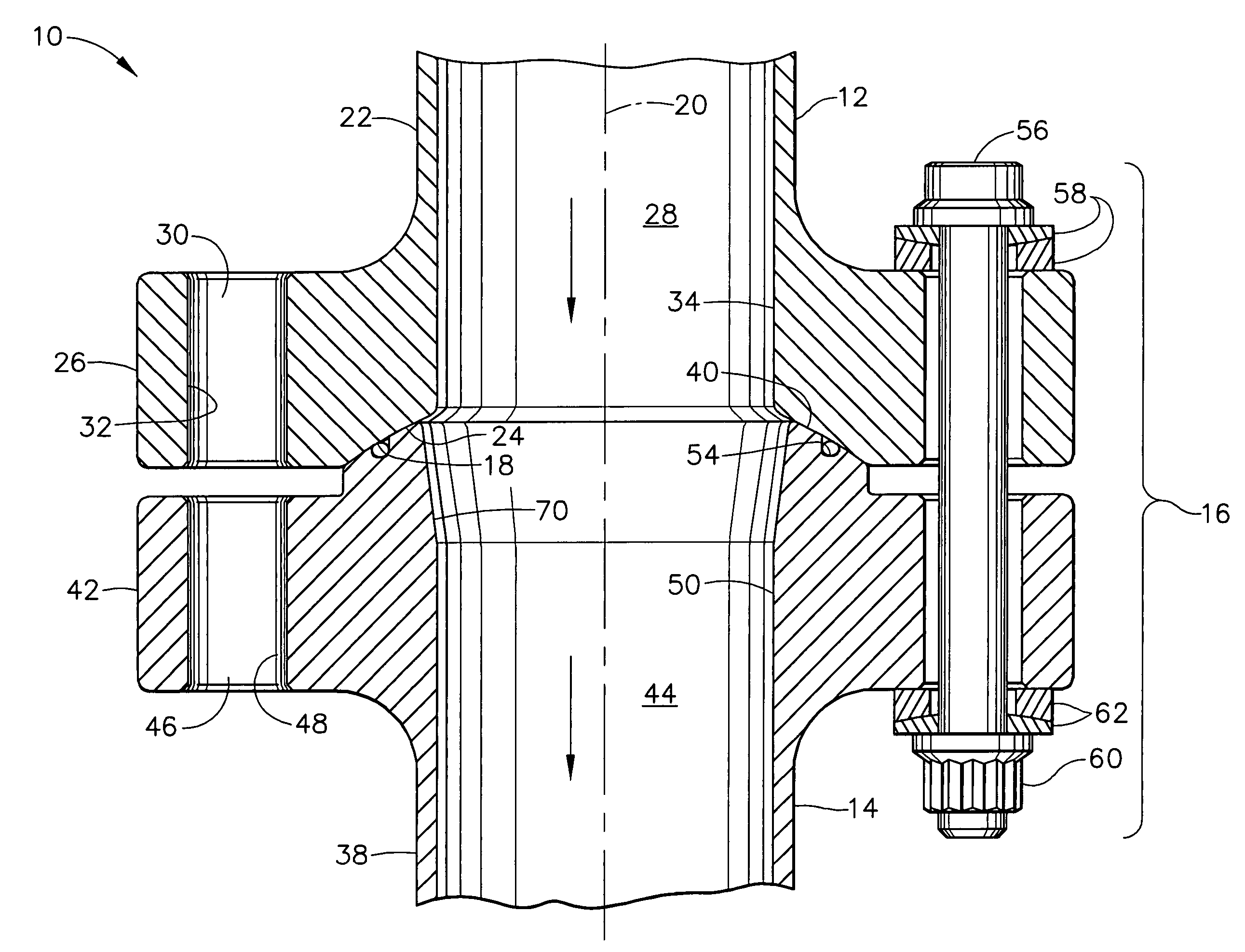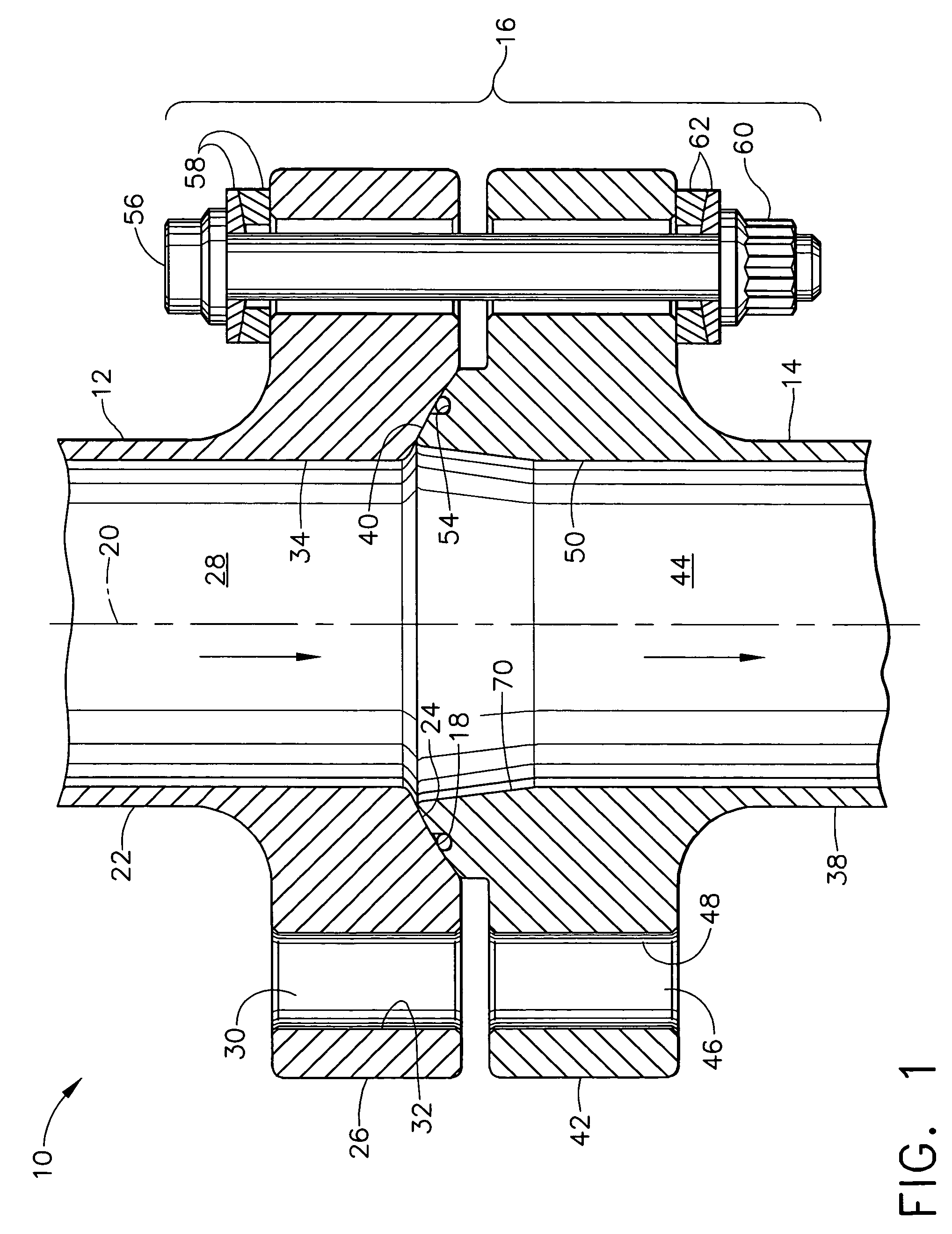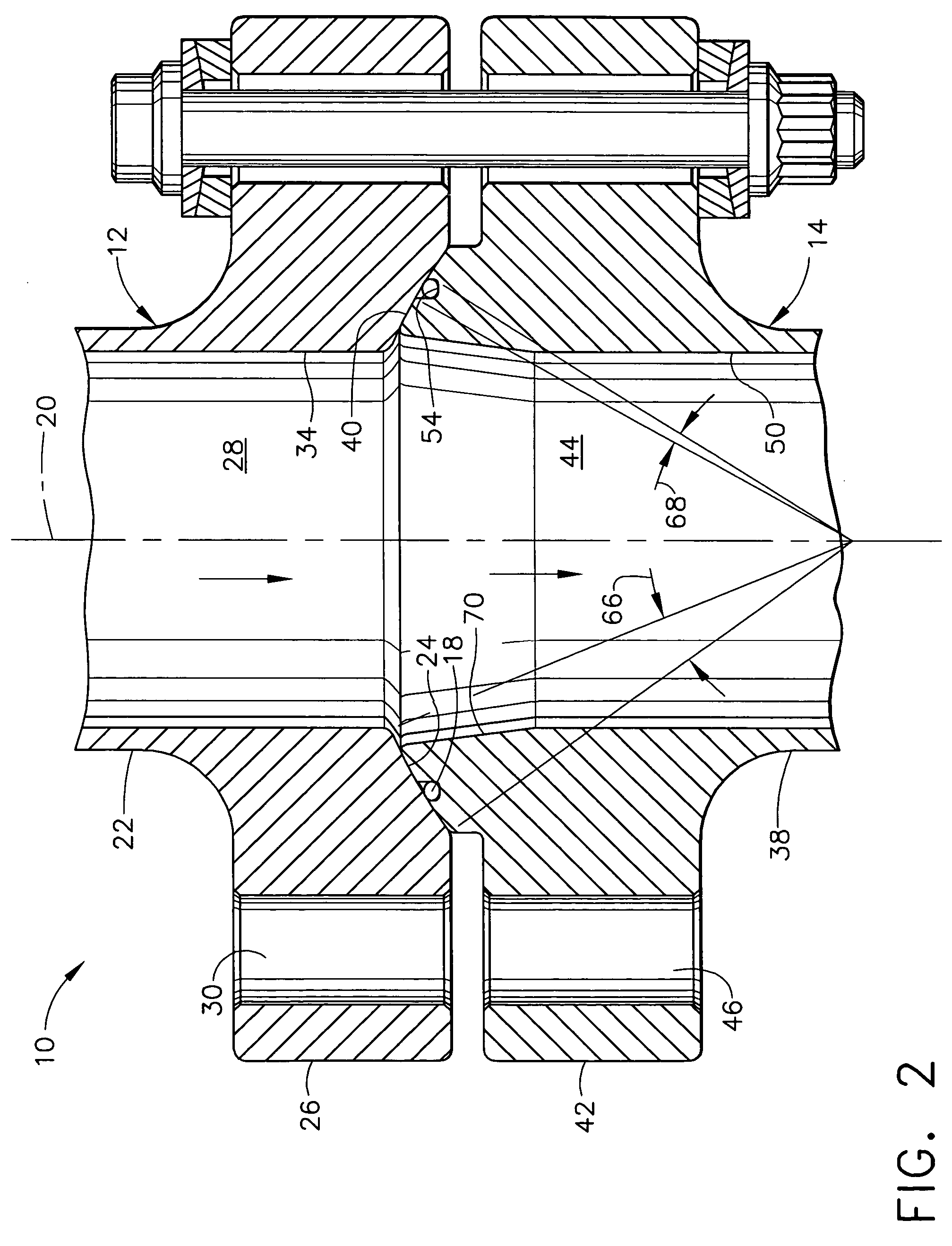Spherical flange assembly
a flange assembly and spherical technology, applied in the direction of sleeve/socket joint, fluid pressure sealing joint, adjustable joint, etc., can solve the problems of structurally inefficient contact angle, limiting the allowable operating temperature range, and inability to achieve elements at the extreme temperatures and pressures of rocket engine applications, etc., to achieve reliable joint, reduce resultant load, and facilitate assembly of engine components
- Summary
- Abstract
- Description
- Claims
- Application Information
AI Technical Summary
Benefits of technology
Problems solved by technology
Method used
Image
Examples
Embodiment Construction
[0019]Due to the inherent tolerance variability of hardware, flange misalignments can occur during the installation of mating components for a liquid-propellant rocket engine. Further, these flange misalignments can include axial, lateral and / or angular offsets. If these misalignments are high, they can import significant loads into the two mating components, which can lead to failure. To address this flange misalignment issue, a spherical flange assembly was developed that allows for misalignment yet reduces imparted loads, while at the same time provides sufficient sealing against leakage. The design of the present invention was tested to evaluate and compare performance parameters, such as, for example, misalignment and leakage. During the testing, the environmental conditions ranged from −100 to +400 degrees Fahrenheit (° F.), with 1000 to 6000 pounds per square inch (psi) pressure being applied to the spherical flange assembly.
[0020]Referring to the Figures, and in particular F...
PUM
 Login to View More
Login to View More Abstract
Description
Claims
Application Information
 Login to View More
Login to View More - R&D
- Intellectual Property
- Life Sciences
- Materials
- Tech Scout
- Unparalleled Data Quality
- Higher Quality Content
- 60% Fewer Hallucinations
Browse by: Latest US Patents, China's latest patents, Technical Efficacy Thesaurus, Application Domain, Technology Topic, Popular Technical Reports.
© 2025 PatSnap. All rights reserved.Legal|Privacy policy|Modern Slavery Act Transparency Statement|Sitemap|About US| Contact US: help@patsnap.com



